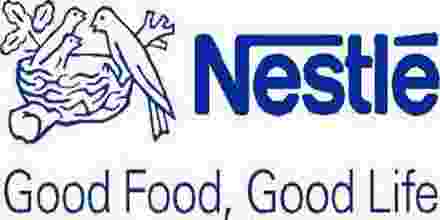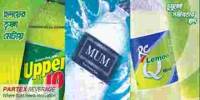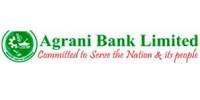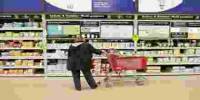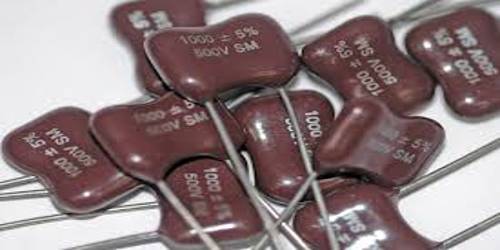Overall Analysis of Amra Korbo Joy
Focus on Marketing and Distribution Functions of Nestlé Bangladesh
Nestlé is world’s largest health, nutrition and wellness company with a mission of “Good Food, Good Life” which actually drives the company to provide consumers with the best tasting and most nutritious food choices in a wide range of food and beverage categories and eating occasions. Although globally it is twice in size of its nearest FMCG (fast moving consumer goods) competitors, in Bangladesh its journey is comparatively new.
Nestlé Bangladesh Limited, a wholly owned subsidiary of Nestlé S.A., started its commercial production in 1994 .Today Nestlé Bangladesh Limited is strongly positioned to grow through its policy of constant innovation and renovation, concentrating on its core competencies and commitment to high quality, with the aim of providing the best quality food to the people of Bangladesh.
The report is based on a working project and the aim of the report is to figure out how to develop a sustainable self-sustaining business model to promote Nescafé and the perception of people about street selling of Nescafé. This report is designed in six major chapters. Initially the opening words about the report were described in the first segment titled “Introduction”. The next segment “Company Profile” contains the history of Nestlé, Product/service offerings, Operational network organogram, Nestlé Bangladesh Ltd. and Visions & mission for the future.
Objectives of the study
General Objective:
The objective of the study is to focus on one broad issue that is “Critical analysis of Amra Korbo Joy(AKJ)” This paper also covers some other factors related to the marketing and distribution functions of Nestlé Bangladesh and its effectiveness which are included under the heading of specific objectives.
Specific Objectives:
- To know about Nestlé Global and Nestlé Bangladesh Ltd.
- To know about the company’s current mission, vision, objectives, and goals.
- To have a very practical idea and over viewing the marketing functions and their performance in Bangladesh.
- To find out that what all strategies a company makes and follows for their products.
- To understand the trend of Bangladesh food market for Nestlé
- To find out the efficiency and effectiveness of existing Marketing system.
- To analyze the strength of Nestlé in the Baby food segment.
- Defining their marketing mix, market segmentation, target market and product positioning and key marketing areas.
- To identify the distribution strategy and its effectiveness.
- Find out their strength, weakness, opportunities, threats
Methodology
The study is conducted on a systematic procedure starting from selection of the topic to final report preparation. I presented this report on the basis of my experience as an intern in Nestle Bangladesh Ltd. during these three months. I have conducted descriptive research and most importantly I have used my practical experiences that I got from the actual market. The overall process of methodology followed:
Selection of the Topic:
My supervisor assigned me this topic of the study. Before the topic was assigned it was thoroughly discussed so that, a well-organized internship report can be prepared.
Sources of Data:
Both primary and secondary sources would be used to collect information for this report. Main source of information about the business of the Nestlé Bangladesh and for the analysis is collected from various resources of the company. Most of them can be treated as the secondary data. Furthermore, I do have the direct work experiences gathered from the field.
Primary data:
- Direct market observations
- operator management
- Face to face conversations with employees, distributors and consumers
Secondary data:
- Company’s reports
- Presentations slides
- Websites
Company Overview
Nestlé S.A is a Swiss multinational food and Beverage Company headquartered in Vevey, Switzerland. It is the largest food company in the world measured by revenues and ranked 72 on the Fortune Global 500 in 2014.
Nestlé has a primary listing on the SIX Swiss Exchange and is a constituent of the Swiss Market Index. It has a secondary listing on Euronext. In 2011, Nestlé was listed No. 1 in the Fortune Global 500 as the world’s most profitable corporation. With a market capitalization of US$233 billion, Nestlé ranked No. 9 in the FT Global 500 2013 In the food industry Nestlé is the most trusted name with high quality products. ― “Good food Good Life” is the mission of Nestlé, which drives the company to provide consumers with the best tasting and most nutritious choices in a wide range of food and beverage categories and eating occasions, from morning to night. The vision of ―creating shared value and the very own ―Corporate Business Principles ―shaped the company culture and made them a reliable investor over 86 countries of the world. Today Nestlé employs around 280000 people and have factories or operations in almost every country of the world with a total equity of CHF 62.60 billion.
History of Nestlé
Nestlé’s origins date back to 1866, when two separate Swiss enterprises were founded that would later form the core of Nestlé. In the succeeding decades, the two competing enterprises aggressively expanded their businesses throughout Europe and the United States.
In August 1867, Charles (US consul in Switzerland) and George Page, two brothers from Lee County, Illinois, USA, established the Anglo-Swiss Condensed Milk Company in Cham, Switzerland. Their first British operation was opened at Chippenham, Wiltshire, in 1873.
In September 1866, in Vevey, Henri Nestlé developed a milk-based baby food, and soon began marketing it. The following year saw Daniel Peter begin seven years of work perfecting his invention, the milk chocolate manufacturing process. Nestlé’s was the crucial cooperation that Peter needed to solve the problem of removing all the water from the milk added to his chocolate and thus preventing the product from developing mildew. Henri Nestlé retired in 1875 but the company, under new ownership, retained his name as SociétéFarineLactée Henri Nestlé.
Global Brands of Nestlé
Nestlé with headquarters in Vevey, Switzerland is the world’s leading nutrition, health and wellness company. The Nestlé story began when the company became known with the first milk based foods for babies. Today Nestlé is the world’s largest food company, employing around 276,000 people at 481 factories in 87 Countries and operating in almost every country in the world.
Nestlé has divided its worldwide operations into three zones:
- Europe: Adriatic, Benelux, Iberian and Russia
- Americas: Austral‐America, Bolivarian, Caribbean and Central American
- AOA: Asia, Africa and Oceania
Product of Nestlé global
Nestlé has 8,000 brands, with a wide range of products across a number of markets, including coffee, bottled water, milkshakes and other beverages, breakfast cereals, infant foods, performance and healthcare nutrition, seasonings, soups and sauces, frozen and refrigerated foods, and pet food.
Nestlé Bangladesh
Nestlé Bangladesh Limited started its commercial operation in Bangladesh in 1994. Its total authorized capital is TK1.5 billion and total paid up capital is TK 1.1 billion. The only factory of the company in Bangladesh is situated at Sreepur, 55 km north of Dhaka. The factory produces the instant noodles and cereals and repacks milks, soups, beverages and infant nutrition products. Today Nestlé Bangladesh Ltd. is a strongly positioned organization. The Company is continuously growing through the policy of constant innovation, concentrating on its core competencies and its commitment to high quality food to the people of Bangladesh Since the beginning of Nestlé’s operation in Bangladesh, the chairman of the company has been Mr. Latifur Rahman, one of the top industrialists of the country, his firm Transcom used to import the products of Nestlé. His business house Transcom is still involved in wide range of business like beverage, pharmaceutical, electronics, newspaper, tea export, fast food franchises etc. Still he remains as an honorary chairman of the company although his group Transcom does not capture any share today as Nestlé S.A. holds 100% share of this company
Nestlé Bangladesh at a glance
Type of business:
Fast Moving Food and Beverage Company with local manufacturing facilities, Reporting to regional business groups for innovation and business results.
Operations:
Foods and Beverages
Constitution:
Fully owned subsidiary of Nestlé S.A.
Product categories:
Nutrition, Culinary, Dairy, Beverages, Breakfast cereals, confectionaries
Manufacturing Facilities:
The Company has a Manufacturing and Packaging Factory situated at Sreepur, 55 km north of Dhaka. The factory produces instant noodles, cereals and repacks: milk, soups, beverages and infant nutrition products.
Employees:
Nestlé Bangladesh provides employment to over 10,000 people directly and through its dedicated suppliers, distributors and service providers. 99.5% of NBL employees are locals and they have equal number of Bangladeshis working abroad in other Nestlé companies as expatriates.
Mission
Nestlé is the most trusted name with high quality products. ―Good food Good Life‖ is the mission of Nestlé, which drives the company to provide consumers with the best tasting and most nutritious choices in a wide range of food and beverage categories and eating occasions.
Vision
The vision of ―creating shared value a company for every moment of everyday from DayNight, Birth- Old age.
Goals
- Sustaining as a world’s leading Nutrition, Health and Wellness Company.
- To manufacture high-standard products.
- Reaching consumers through ensuring cost efficiency.
- Promoting Safety is by choice.
- Producing large volume to achieve production cost economies.
- Enabling quality products to be sold out at obtainable prices.
- Enhancing the awareness among people about using water resources.
Customers of Nestlé Bangladesh Limited
Nestlé Bangladesh Limited markets its products throughout the country with the help of the Distributors. A part from that, Nestlé Professional is a separate function which is responsible for the institutional sale. There are currently 80 distributors of Nestlé Bangladesh products of which76 are retail distributors and remaining 4 are Nestlé Professional’s distributors providing products for the out of home consumptions. The whole country is divided into six regions:
- Dhaka North
- Dhaka South
- Chittagong
- Sylhet
- Bogra
- Khulna
The retail distributors supply Nestlé products to four types of outlet, while Nestlé Professional Distributors supply products to different institutions.
Functions of Nestlé Bangladesh
Day by day demand and trust on the Nestlé products are growing. Focusing on the substantial Growth and the other business perspective, the company developed its own functional areas. Currently the existing fictional areas are:
- The General Management: They take cares of the overall operation of the company and makes the key decisions.
- Human Resource: HR focuses the management of employees and organizational culture; moreover HR professionals are also responsible for retaining the people who are making the difference with their competitors at the end of the day.
- Supply Chain: Supply chain ensures the stable supply of the products according to the demand of the customers.
- Marketing: looks after the existing brands, market share and product development of the products.
- Nutrition: Nestlé is the world’s largest Nutrition Company that is why the importance of the Nutrition products is much more in compared to the other food companies; as a result they created a totally separate team to look after the Nutrition products, such as, CERELAC, LACTOGEN.
- Finance and control: Finance and control deals with the financial transactions and most importantly they also apply the control mechanism to remain the company complaint financially and procedurally.
- Sales and Nestlé Professionals: They are responsible for earning revenue for the company, but sales goes for the retail distributors and Nestlé Professionals looks after the institutional sales.
Project “AmraKorbo Joy”
AmraKorbo Joy or (We shall Overcome) is an important project to sell and promote Nescafé and Nestea through using street channels of marketing. Basically it’s the project under Nestle professional Bangladesh which is one the strategic business unit of Nestle Bangladesh.
The concept of this project “AmraKorbo Joy” first came from an African market of Nestlé. Basically, in 2010 Nestle Kenya came up with an idea of “MY Own Business” which is known as “MYOWBU” in Africa. This business model is developed by Nestle Professional to penetrate the street channels. Thus they can create job opportunity for the least privileged and most importantly promote their brand.
Moreover, according to global trends, coffee is the fastest growing beverage in the world. There are many different ways to consume our favorite cup of coffee like-hot, black, cold, milky, frothy, sweetened and layered; to wake up, to help you socialize and to keep you going.
Many of these trends arise in out-of home where coffee sellers continuously try to innovate, differentiate and surprise their consumers. Coffee serves different daily need states and has become part of many daily rituals.
Purpose
To create a self-sustaining business model for promoting NESCAFE and NESTEA Iced Tea brand in the street channel. The model must help in creating entrepreneurs in less fortunate social classes (Termed as „Operator‟).
Background
Lack of visibility and call to action materials of Nestlé beverages is a problem. Visibility of NESCAFE and NESTEA Iced Tea brand should be ensured in a new way that also provides a viable business model for both operator and Nestlé. In short- Visibility, Profitability, Responsibility‟ throughout Bangladesh.
- Visibility: Every person in this nation should be able to see one seller and hear the words Apnikiak cup NESCAFÉ khaben”? At least once every day.
- Profitability: Seller wins (Through Increased Income), Operator wins (Through having a profitable business of their own) and Nestlé wins (Through increasing its product consumption). All must be profitable.
- Responsibility: We must continue until we have increased the minimum wage of Bangladesh to USD 100 per month level.
Business Case
One person (employee of Nestlé distributors, Operators or is self-employed) is equipped by Nestlé with 1 t-shirt, 1 cap, 1- 3-liter flask, 2 plastic containers (For COFFEEMATE & Sugar), 3 spoons and 1 bag to carry it all in the front. Fully equipped, full kit weighs in about 5 kg.
Each person operates 8 hours a day in 2 shifts per day totaling 26 days per month (Fulltime) or 4 hours in 1 shift per day totaling 26 days (Part-time). Each person should sell 1 flask or~50 cups @10 BDT per shift (timing and amount are derived from test marketing).
Project Scope
This project includes Nestlé distributors, Nestlé professional employees, Nestlé sales team, Operators (Definition here: Any person or organization who operates commercial or institutional food or beverage outlets as a business in out of home and complies with the legal, hygiene and operational requirements of Nestlé).
Operational Objectives
In brief the objectives are below:
Perfect Operational Efficiency
- MOP (Method of Preparation) testing every week through weight-machine
- 3Ws- Perfecting Whom to sell, Where to sell and when to sell. –Time-wise Hot spot based selection and sales management
- Reporting daily through SMS
- Collecting weekly consumer feedback
Perfect Quality Efficiency
- Ruthlessly implementing Branding, Hygiene, Safety and control requirements.
Seller Focused Approach (Seller MUST NOT be exploited)
- Timely incentive distribution
- Timely salary distribution
Project Objectives
Visibility of Nestlé beverages throughout Bangladesh
- Will be communicated upon interest
Profitability for operator
- Each unit must be self-sustained financially
Responsibility towards
Consumers- Hygiene
- Use Jar water or available water whichever is safer
- Not reuse unsold NESCAFE mix
- Clean mixing spoon at least once per 5 cups
Society- Include less fortunate social classes
- People living under the poverty line
- Working class males and females
- Through Orphanages
- Through NGOs (Non-Governmental Organizations)
Law- Operate with full compliance
- Self-explanatory
Procurement of Kits
Always ensure you get a sample from already operating markets to give a clear idea of how a kit should look. The following must be considered when procuring a kit.
- Weight: Recommended material for fabricating the kit is fiber glass material because of its low weight
- Flask: Standard flasks usedare3.5litres.Always considers the total weight of both the flask and kit before purchase. (It must be manageable considering it’s used all day)
- Comfort: The padding of the kit on the shoulders and the strapping offer comfort when the seller is carrying the kit
- Practicability: Identify whether you want to use sachets or tinned product and if so, ensure that there is a place to store all the equipment required to facilitate the selling .g. the tin /sachets
- The flask needs to be a pumping unit. Seller cannot pour hot water!
- Life of the kit: The average life span of a kit is 2yrs
- Have an allocation for damaged kits as buffer stock
Branding
AMRA KORBO JOY sellers become the brand ambassador, therefore the branding’s look and feel must be in line with the guidelines. Items to be branded include:
- Uniforms (T-shirts, caps, aprons (convenient for holding money), etc)
- The kit
- The flask
- Cups
Contract for the Operator and Seller
The contract acts as a guide to the terms and conditions of the business. This is crucial in any form of business as its how’s the level of commitment, involvement and protection of both parties.
Project Execution
The first impression always lasts which means all efforts must be geared towards a successful launch. Proper training is important as all the stakeholders act as ambassadors of the brand. The sequence below should help to ensure a good start.
Training
The training is conducted for both the seller and the operator on the standard operating procedures and on basic Food Safety and Hygiene as explained later.
Day-to-Day Operation
- The AKJ operator buys products for man authorized NP distributor.
- The AKJ operator recruits sellers from the nearby community to sell.
- The AKJ sellers pickup the kit with the flasks each morning and sells HOT coffee to consumers in the allocated area.
- The AKJ operators as well as the AKJ seller earn their living on the number of cups sold per day. Daily operations are supervised by a AKJ supervisor.
- This supervisor’s hold visits each operator weekly, during the visit he/she does a QA check, interviewsatleast10payingcustomerstomeasure consumer response and recruits new operators.
- The supervisor is under the Distributor’s payroll and cost can be shared between NP and C&B in exchange for regular consumer feedback. Once a week the findings are reported back to Nestle.
- This is a self-motivating program and both the AKJ operator and AKJ seller decide on the daily income they would like to earn, but adhering to a set minimum cups per day to ensure Nestlé’s investment is safeguarded.
Key Success Factors of project
- Dedicated distributors
- Integrate with local business practice
- Variable incentive of sellers
- Capture key locations
- Fully dedicated resources and operators
- Attractive margins for all stakeholders
- Effective supervision
- Training
Following is a brief discussion on how the Bangladesh market is responding to these-
Dedicated distributors:
We already have 13 dedicated Nestlé Professional distributors (3 more in process) in Bangladesh. 6 are located in key locations at Dhaka city who will deliver the products required to operators
Integrate with local business practice
- The salary and incentive policy is maintained so that both the operator and seller can earn above average from market. This is implemented as per market study.
- The operator gives the seller a minimum amount as payment keeping the variable incentive ratio intact (point: 03 for the ratio) for the first 3 months only in order to motivate and retain sellers in this probation period.
- Currently this is minimum monthly BDT 7000 for 1167 cups @BDT15 or 1750 cups @BDT12 or 1500 cups with mixed pricing.
Variable incentive of sellers
We sell two different cups of NESCAFÉ. One at BDT 15 and the other at BDT 12
The seller gets BDT 6 and BDT 4 for each cup. This is 75% and 67% of gross profit of each cup.
Capture key locations
We have in our database over 1000 unique locations around Universities and colleges to focus on.
After each seller goes to these locations, 1st week is used to assess the routes and find the hot spots and perfect time of the day to focus on. Based on this the seller knows Where to go When.
Attractive margins for all stakeholders:
Gross margin on each cup is now at 52% and 50% (For BDT 15 and BDT 12 respectively) with a division on COGS: Operator: Seller of
- For BDT 15,in percentage, 47:13:40 and in BDT, 7:2:6
- For BDT 12, in percentage, 50:17:33 and in BDT, 6:2:4
Effective supervision
Supervision is maintained in the following categories
Branding requirements
Sellers become the brand ambassador, therefore the branding’s look and feel must be in line with the guidelines. Items to be always branded include:
Uniforms (T-shirts, caps)
- The kit (Must be clean and stitched when needed)
- The flask- Washed with hot water daily before operation begins
- Cups- Branded cup
Hygiene Requirements
- Shower or bathe daily
- Must wash hands before handling food
- Finger nails must be kept short and clean
- Wear clean clothes
- Keep hair short or held together properly
- Use a new glove every day
Food Safety and Operational Requirements
- Heat clean water to boiling point
- Strap the flask to the kit
- Fasten all the straps to ensure the products and the flask is safe before starting trip
- The person operating the kit must ensure his/her clothes, health, behavior and body meet hygiene requirements
- Serve a piece of tissue paper along with each cup
Controls / Performance
- Daily reporting of sales per operator
- Monthly review of ACTUAL versus TARGET sales. Apply corrective action where performance is below target
- Ongoing monitoring quality assurance compliance – retraining where necessary
- Collecting and collating consumer feedback on the product’s
Monitoring
- Daily reporting of sales per operator
- Monthly review of ACTUAL versus TARGET sales. Apply corrective action where performance is below target
- Ongoing monitoring quality assurance compliance – retraining where necessary
- Collecting and collating consumer feedback on the product’s
Training
Initial mandatory training is considered complete if the seller is aware and following-
- Branding, Hygiene, Food safety and operational, control/Performance monitoring requirements stated in point 9.
- Perfects the MOP (Method of preparation) of a cup of NESCAFÉ tested using a weight machine.
- Monthly training on salesmanship arranged by Nestlé.
Furthermore below is also included the standard operating procedure and division of responsibility-
Day-to-Day Operation
- The operator buys products from an authorized NP distributor.
- The operator recruits sellers from the nearby community to sell.
- The sellers pick up the kit with the flasks each morning and sells NESCAFÉ to consumers in the allocated area.
- The operators as well as the seller earn their living on the number of cups sold per day. Daily operations are supervised by a Nestlé intern.
- This Intern should visit each operator weekly, during the visit he/she does a quality check, interviews at least 10 paying customers to measure consumer response and recruits new operators.
- This is a self-motivating program and both the operator and seller decide on the daily income they would like to earn, but adhering to a set minimum cups per day to ensure Nestlé’s investment is safeguarded.
Risks & Constraints
- Significant turnover of employees is an issue. Control must be maintained so that the equipment (Amar Korbo Joy kit) is retained in such a situation.
- Refilling on the way. If refilling can be efficiently done, 3 flasks can be sold with~150 cups sold per day.
- Location is the key to success. Operation must be in places with a lot of people (for example Marketplace, Town square, Transport hub, Commercial & industrial location, people gathering places, hotel and restaurant locations etc.)
- Sellers aren’t punctual. In most cases it has been seen they don’t show up on time even after regular supervision.
- It is very difficult to find a determined seller for this business and the reasons are hesitation on doing the work which appears to be quite common because they feel shy of wearing the uniform and carry the bag and walk all around the streets and sell coffee throughout the day, criticism from others is another vital reason.
- Be long so in order to avoid high transportation costs many sellers simply rejected the job
- Sellers went through many kinds of barriers while selling in specific locations, places, parks etc. in many places like parks securities usually doesn’t allow hawkers to enter.
- And sell whereas parks are always jacked with people so this acts as another problem. In specific clubs or in parks, club members threaten the sellers or even ask for bribery in return for allowing them to sell otherwise they don’t permit the sellers to sell in those places which are controlled by them.
- Sellers sometimes don’t work according to the contract. They simply leave the job be-fore the end of the period or even run away without informing.
- It has been seen that operator’s break the company rules that is they don’t pay the sellers a satisfactory amount of salary so due to low salary seller walks away. Also the operators don’t take proper care of them, don’t stand beside them if any problem arises thus seller decides to
- If target is achieved, then per extra sale of a cup sellers receive commission so in order to sell more they don’t focus on the quality of the coffee they are serving instead try to sell more in order to increase the number of sales and receive more commission.
- Customers gets dissatisfied since the quality and taste doesn’t remain up to their expectation and thus the words that nestle promised to keep in terms of quality and taste simply becomes meaningless.
- Customer complaint about price, quality and quantity are a common scenario but complains on prices tends to be high than complains on quantity.
- When it comes to customer reaction, in most scenarios it has been seen our sellers created a positive image in the minds of customers through the quality of coffee they have served and many have liked the new concept that nestle have implemented but out of all the customers there have been few who passed negative comments on the sellers, didn’t even bought a cup of coffee cut still made fun of the sellers or even didn’t like the coffee and the new concept of selling coffee but they are very few in number. It has to be kept in mind that every scenario has a pros and cons.
- Operator sometimes seems to be out of track because we figured out they don’t maintain the financial records that takes place, doesn’t keep track of the sales figure on daily basis, doesn’t keep the costs in mind that incurs and thus at the end of the month when figures don’t match like it was supposed to be, they fail to gain their desired profit and thus had to bear a loss and there comes a point when they decide either to rise up by being more active in the upcoming days of running the business and continue with it or they shut the doors and go home.
- Huge costs associated in training the sellers, setting the sellers on various locations and other variable costs like transportation, water boiling. It may appear that if products are purchased, but sellers leave the job all of a sudden without a notice then products are left idle and it appears to be a sunk cost for the operator as long he doesn’t get a seller in hand.
- Keeping an eye on sellers who are working in various locations is really tough be-cause it appears to be like too many eggs in one basket.
- In the summer, sales of coffee goes down so sellers don’t feel like walking in the street throughout the day and sell less number of cups. They either looks for something alternative or decides to leave thus bring the business to a halt.
- Even after extensive training it’s really hard to make the sellers work perfectly. The amount of sugar, coffee-mate, coffee they put in a cup to prepare a cup of coffee is not always accurate. Method of preparation (MOP) acts a major problem too, thus tends to increase the cost and at the end of the month it turns out to be difficult for operators to match the figures like it was anticipated in the beginning.
- Normally sellers are allowed to take a leave for four days a month but it has been seen they take more leave and doesn’t follow the contract properly. Thus at the end of the month it turns out to be difficult for an operator to pay the salary due to lower number of returns from sales.
- Some sellers has built up a good connection with their regular customers e.g. – shop keepers of specific stores or street shop keepers so they ask to add more sugar, coffee-mate, coffee while making the coffee so it is not possible to refuse so again method of preparation doesn’t stick to what it actually was supposed to be so it increases cost and target can’t be reached.
- Sellers who came directly from the village find it difficult to get a place to live in the early stage so in fact the operators have to bear the costs of providing them with accommodation.
- If not properly guided, sellers break the rules and sell according to their wish thus it hampers the business and quality of the coffee.
Recommendations
- Firstly the time period wasn’t sufficient enough to complete my internship report with the actual outcome since I have been employed as an intern for six months whereas according to my academic schedule I am bound to submit my report within three months so right now it’s not possible to display the actual outcome and knowledge I will be gaining throughout the internship period.
- It isn’t certain of what the actual outcome is going to be. We have a mission and that is to spread the consumption of Nescafé in each and every corner of the city and there in the long run to spread it throughout the country but within these three months and with more three months to go it is impossible to declare whether this project is sustainable and will it live up to our vision.
- As one of the project leaders I always suggest to my supervisor to increase the seller’s benefits because sellers are the heart of this project. Initially, they do not give too much attention regarding that issue but now after four months of working; everyone those are associated with this project they get to know that we have to have more benefits for the sellers if we want to keep them into the market.
- Some of the major problems that have been discussed before took place initially at a high rate but as time passed by things started to get under control.
- A huge emphasis to be paid on the preparation of coffee to make sure quality is maintained, hygiene requirements are met, to make sure ingredients are used properly, too much usage may incur costs which the operator will have to bear so extensive training on the preparation of a cup of coffee. Measurements should be done through weight machine. If proper measurements are done on a regular basis, targets will be easier to achieve and costs won’t go out of hands.
- Transportation costs appear as one other major problem so sellers are asked to live near their territory and operators house so they can have easy access.
- Operators should be monitored strictly so that they follow the policies set by the
- Keeping track of operators‟ financial records is mandatory otherwise at the end of the month results won’t meet the target thus operators wrap up the business and go home.
- It is the duty of the operators to regularly record the transactions in the record book and keep the territory officer updated about daily number of sales and costs that incur.
- Sometimes it has been seen that sellers don’t put their best effort on work and can’t meet the daily sales target and at the end of the month, operators find it difficult to pay the salary due the less revenues so it is the duty of both territory officer and operator to strictly monitor he sellers while they are on work and in extreme cases, a reduction in salary will work as an effective tool since sellers aren’t willing to give their best effort.
- Usually four days leave per month is permitted for every sellers but it has been seen they either skip work or they take a leave from work which on the other hand doesn’t give higher returns to operator, so if they take leaves more than four, their salary will be deducted thus this will act as fear for the seller and will prevent them from taking leaves.
- Sellers should build up their own network in those areas where they are assigned to sell thus it will enable them to sell more.
Conclusion
AKJ is such a business model that can bring about massive change for all of its stakeholders. All direct and indirect stakeholders in the value chain have to be benefited from this business. This meets Profitability. For consumer end it will be that same perfect cup of worldwide recognized coffee brand- Nescafe with lower price everywhere- which ensures Visibility. As a part of Corporate Social Responsibility, AKJ is the project that has every aspect to develop entrepreneurs in less fortunate social classes which entails Responsibility. Decisions that negatively impact the seller can have a big impact on the success of the business. Price increases, change of business model, unstable operators, supply issues, etc can leave them de-motivated. This can impact cup sales and ultimately result in sellers abandoning the project.
